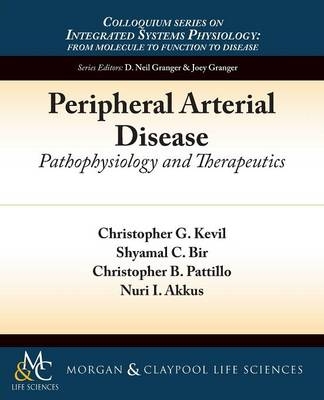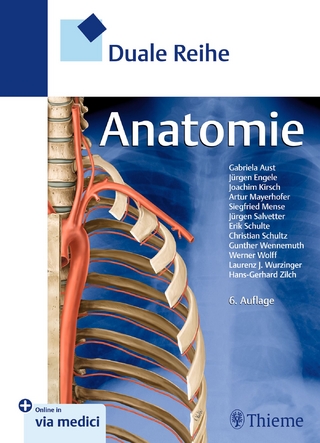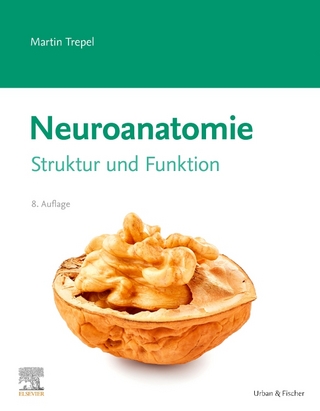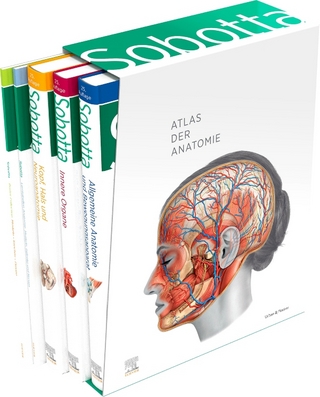
Peripheral Arterial Disease
Pathophysiology and Therapeutics
Seiten
2013
Morgan & Claypool Publishers (Verlag)
978-1-61504-598-3 (ISBN)
Morgan & Claypool Publishers (Verlag)
978-1-61504-598-3 (ISBN)
Peripheral arterial disease (PAD) is a cardiovascular disorder of the peripheral vasculature due to progressive atherosclerotic stenosis of conduit arteries restricting blood flow to tissues. PAD is typically a disease of older individuals. This title discusses PAD signs and symptoms, pathophysiological mechanisms, current management, and future disease targets and possible therapeutic treatments.
Peripheral arterial disease (PAD) is a cardiovascular disorder of the peripheral vasculature due to progressive atherosclerotic stenosis of conduit arteries restricting blood flow to tissues. PAD is typically a disease of older individuals, and the incidence of PAD continues to rise due to an increase in cardiometabolic disease and an aging population. Importantly, “all cause” and cardiovascular morbidity and mortality are significantly increased in PAD patients. PAD diagnosis remains a significant challenge, as a large number of patients are asymptomatic. Moreover, PAD results in a significant financial and societal burden with underutilized diagnostics and limited effective therapies. Here we discuss PAD signs and symptoms, pathophysiological mechanisms, current management, and future disease targets and possible therapeutic treatments for PAD.
Peripheral arterial disease (PAD) is a cardiovascular disorder of the peripheral vasculature due to progressive atherosclerotic stenosis of conduit arteries restricting blood flow to tissues. PAD is typically a disease of older individuals, and the incidence of PAD continues to rise due to an increase in cardiometabolic disease and an aging population. Importantly, “all cause” and cardiovascular morbidity and mortality are significantly increased in PAD patients. PAD diagnosis remains a significant challenge, as a large number of patients are asymptomatic. Moreover, PAD results in a significant financial and societal burden with underutilized diagnostics and limited effective therapies. Here we discuss PAD signs and symptoms, pathophysiological mechanisms, current management, and future disease targets and possible therapeutic treatments for PAD.
Introduction
Clinical Parameters of Peripheral Arterial Disease
Vascular Anatomy and Physiology
Pathophysiology of Peripheral Arterial Disease
Vascular Dysfunction Responses
Adaptive Vascular Responses
Current Medical Management of Peripheral Arterial Disease
Emerging Targets and Therapeutic Directions
Summary
References
Author Biographies
| Erscheint lt. Verlag | 30.8.2013 |
|---|---|
| Reihe/Serie | Colloquium Series on Integrated Systems Physiology: From Molecule to Function |
| Verlagsort | San Rafael |
| Sprache | englisch |
| Maße | 191 x 235 mm |
| Gewicht | 171 g |
| Themenwelt | Studium ► 1. Studienabschnitt (Vorklinik) ► Anatomie / Neuroanatomie |
| Studium ► 1. Studienabschnitt (Vorklinik) ► Physiologie | |
| Naturwissenschaften ► Biologie ► Humanbiologie | |
| ISBN-10 | 1-61504-598-8 / 1615045988 |
| ISBN-13 | 978-1-61504-598-3 / 9781615045983 |
| Zustand | Neuware |
| Informationen gemäß Produktsicherheitsverordnung (GPSR) | |
| Haben Sie eine Frage zum Produkt? |
Mehr entdecken
aus dem Bereich
aus dem Bereich
Struktur und Funktion
Buch | Softcover (2021)
Urban & Fischer in Elsevier (Verlag)
44,00 €
Buch | Hardcover (2022)
Urban & Fischer in Elsevier (Verlag)
220,00 €


